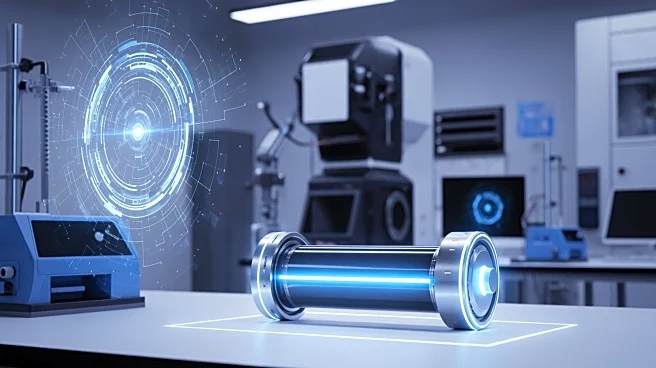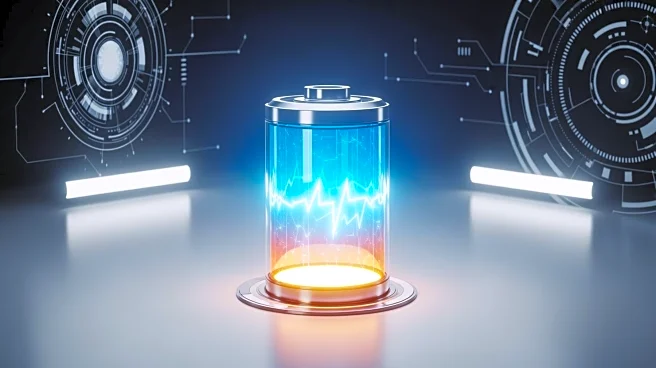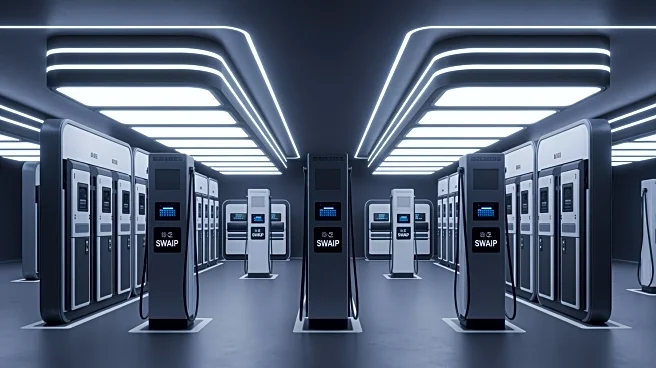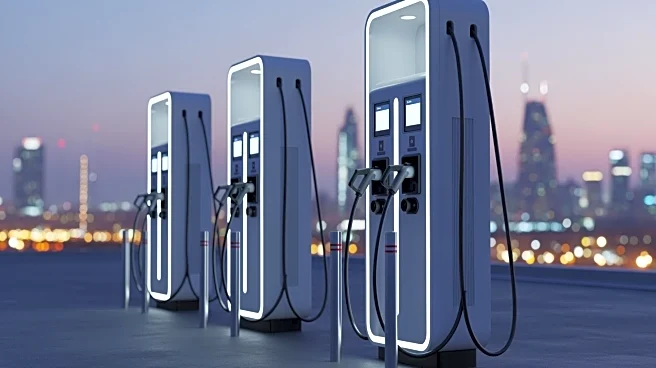What's Happening?
Researchers at the Chinese University of Hong Kong have developed a new lithium-ion battery design that can be pierced without catching fire. This advancement involves a change in the electrolyte material, which prevents the uncontrollable fires typically
caused by punctures or bends in traditional lithium-ion batteries. The new design uses lithium bis(fluorosulfonyl)imide as a solvent, which bonds with lithium only at higher temperatures, preventing thermal runaway. Tests showed that the modified battery's temperature rose by only 3.5°C when pierced, compared to over 500°C in conventional batteries. The new design retains 82% of its capacity over 4100 hours of use, indicating competitive performance with current technology.
Why It's Important?
This development is significant for industries relying on lithium-ion batteries, such as consumer electronics and electric vehicles, as it addresses safety concerns related to battery fires. The ability to prevent thermal runaway could lead to safer products and reduce the risk of accidents. Additionally, the potential for mass production within three to five years suggests that this technology could soon be widely available, enhancing battery safety standards across various applications. This advancement may also influence regulatory policies and consumer trust in battery-powered devices.
What's Next?
The findings from the Chinese University of Hong Kong could be incorporated into the next generation of batteries, with mass production expected in three to five years. This timeline suggests that manufacturers may begin adopting this safer design, potentially leading to a shift in industry standards. Stakeholders such as battery manufacturers, consumer electronics companies, and electric vehicle producers may need to consider integrating this technology into their products to enhance safety and meet evolving consumer expectations.
Beyond the Headlines
The introduction of a safer lithium-ion battery design could have broader implications for environmental sustainability. By reducing the risk of battery fires, this technology may decrease the need for emergency responses and mitigate environmental damage caused by such incidents. Furthermore, the advancement could drive innovation in battery technology, encouraging further research into alternative materials and designs that prioritize safety and efficiency.














